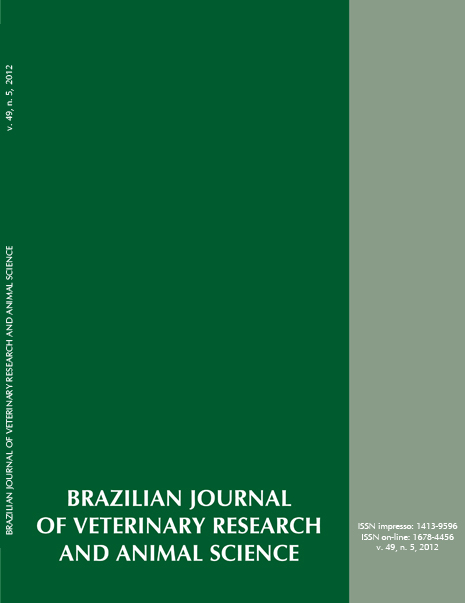Muscular electromyographic and histopathologic changes in dogs naturally infected by Leishmania infantum
DOI:
https://doi.org/10.11606/issn.2318-3659.v49i5p404-413Keywords:
Leishmania infantum. Canine visceral leishmaniasis, Myopathy, PolymyositisAbstract
The aim of this study was to evaluate the electromyographic and histopathological changes in skeletal muscles of dogs naturally infected by L. infantum. Twenty five mixed breed adult dogs with parasitological, molecular and serological diagnosis were selected. The evaluated muscles were: triceps brachial, extensor carpi radialis, biceps femoris and gastrocnemius. One dog had locomotor clinical signs with hind limbs paresis associated with severe muscle atrophy. Twenty-three (92%) had some type of muscular change, and in 22 (88%) such changes were directly identified by electromyography. Even without any clinical signs of the disease, 10 (40%) dogs had electromyographic and histopathological changes. Leishmania antigens were detected in muscles of four (16%) dogs. The electromyographic evaluation indicated the occurrence of chronic polymyositisin 13 (52%) dogs, the presence of both acute and chronic muscle inflammation four (16%), acute myopathy in two (8%) and absence of electromyographic abnormalities in three (12%) dogs. The most frequently observed histopathological changes were degeneration and necrosis of myofibers and inflammatory infiltration observed in 12 (48%) dogs. Other changes were decreased diameter of muscle fibers in 15 (60%) and peri or endomysial fibrosis in 14 (56%) animals. The changes observed in the present study showed that even in the absence of clinical signs, most dogs infected by Leishmania infantum have chronic polymyositis.
Downloads
Downloads
Published
Issue
Section
License
The journal content is authorized under the Creative Commons BY-NC-SA license (summary of the license: https://





